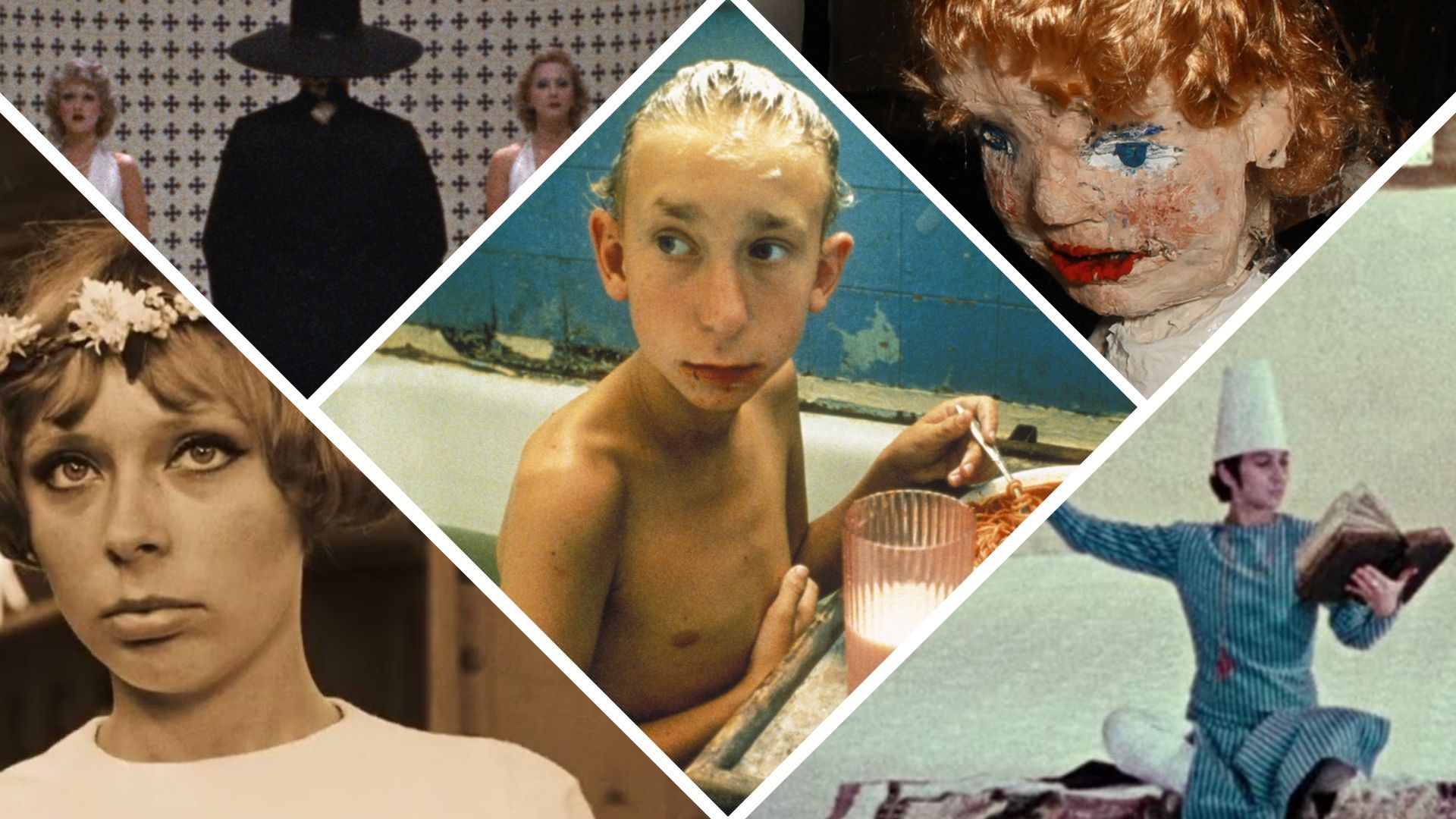Unveiling The Magic Of Movies Rules: A Deep Dive Into The World Of Filmmaking
Have you ever wondered what makes movies so captivating? It's not just about the actors or special effects. There's a whole set of movies rules that filmmakers follow to create masterpieces. These rules are the backbone of every great film, shaping the way stories are told and experienced. Whether you're a film enthusiast or just someone who loves watching movies, understanding these rules can enhance your viewing experience. So, buckle up, because we're about to take a journey into the fascinating world of movie-making!
You might be thinking, "Why should I care about movies rules?" Well, imagine this: you're watching your favorite movie, and suddenly something feels off. The story doesn't flow, the characters feel flat, or the pacing is all over the place. Chances are, one or more of the fundamental movies rules were broken. Understanding these principles can help you appreciate the artistry behind your favorite films and even inspire you to try your hand at filmmaking.
In this article, we'll explore the essential movies rules that every filmmaker should know. We'll break down the basics, delve into advanced techniques, and share insights from industry experts. By the end of this read, you'll have a deeper understanding of what makes a great movie tick. So, let's dive in and uncover the secrets of the silver screen!
- Mark Scheifele And Dara Howell A Deep Dive Into Their Relationship Life
- Bratty Gbaby Leaked The Untold Story And What You Need To Know
Table of Contents
Basic Movies Rules Every Filmmaker Should Know
The Art of Storytelling in Movies
Visual Rules That Elevate Movies
Audio Rules That Enhance the Experience
Editing Rules That Bring Movies to Life
Acting Rules That Make Characters Memorable
The Impact of Technology on Movies Rules
The History of Movies Rules
Back in the day, when movies were just a flicker of light on a white sheet, there weren't many rules to follow. Filmmakers experimented with techniques, often breaking new ground without realizing it. Over time, as the industry grew, so did the need for structure. Movies rules began to take shape, guiding filmmakers on how to craft compelling narratives and captivating visuals.
One of the earliest movies rules was the 180-degree rule, which ensures continuity in a scene by keeping the camera on one side of an imaginary line. This rule helps maintain spatial relationships between characters and objects, making scenes easier to follow. As technology advanced, so did the complexity of movies rules, with new techniques and tools being introduced to enhance storytelling.
Today, movies rules are a blend of traditional principles and modern innovations. Filmmakers continue to push boundaries, creating new rules while respecting the old ones. This evolution has led to the diverse range of films we enjoy today, from action-packed blockbusters to heartfelt indie dramas.
Basic Movies Rules Every Filmmaker Should Know
Let's start with the basics. There are a few fundamental movies rules that every filmmaker should have in their toolkit. These rules form the foundation of good filmmaking and are essential for creating engaging content.
Rule 1: Show, Don't Tell
This is one of the most important movies rules. Instead of having characters explain everything through dialogue, use visuals and actions to convey information. This approach keeps the audience engaged and allows them to interpret the story in their own way.
Rule 2: The Rule of Thirds
This visual rule helps create balanced and interesting compositions. By dividing the frame into thirds both horizontally and vertically, filmmakers can place key elements along these lines or at their intersections, drawing the audience's eye to important parts of the scene.
Rule 3: Continuity Editing
Continuity editing ensures that scenes flow smoothly from one to the next. This involves paying attention to details like character positions, props, and camera angles to maintain consistency and avoid jarring the audience out of the story.
These basic movies rules are just the beginning. As filmmakers gain experience, they can explore more advanced techniques to enhance their craft.
The Art of Storytelling in Movies
Storytelling is at the heart of every great movie. Movies rules for storytelling focus on creating compelling narratives that resonate with audiences. Here are some key aspects to consider:
- Character Development: Well-developed characters are crucial for engaging storytelling. Audiences need to care about the characters to become invested in the story.
- Conflict and Resolution: Every story needs conflict to drive the plot forward. Whether it's internal or external, conflict creates tension and keeps the audience hooked.
- Pacing: The rhythm of a movie affects how the story is perceived. Proper pacing ensures that the audience stays engaged without feeling rushed or bored.
By mastering these storytelling movies rules, filmmakers can create narratives that captivate and inspire their audience.
Visual Rules That Elevate Movies
Visuals are a powerful tool in filmmaking. Movies rules related to visuals focus on creating stunning imagery that enhances the story. Here are some techniques to consider:
Color Theory
Colors can evoke emotions and set the tone for a scene. Filmmakers use color theory to create visually appealing compositions that complement the story being told.
Camera Angles
Different camera angles can convey different emotions and perspectives. Low-angle shots, for example, can make characters appear powerful, while high-angle shots can make them seem vulnerable.
Lighting
Lighting is crucial for setting the mood of a scene. Whether it's soft, natural light for a romantic moment or harsh, stark lighting for a dramatic confrontation, the right lighting can enhance the emotional impact of a scene.
These visual movies rules help filmmakers create immersive worlds that draw the audience into the story.
Audio Rules That Enhance the Experience
Audio is just as important as visuals in filmmaking. Movies rules for audio focus on creating a rich soundscape that complements the visuals and enhances the storytelling.
Sound Design
Sound design involves creating and manipulating sounds to enhance the atmosphere of a scene. From ambient noises to specific sound effects, sound design can make a movie feel more realistic and engaging.
Music
Music can evoke emotions and set the tone for a scene. A well-chosen soundtrack can elevate a movie, making it more memorable and impactful.
Dialogue
Clear and concise dialogue is essential for effective communication between characters. Filmmakers must ensure that dialogue is natural and serves the story, rather than feeling forced or unnecessary.
By following these audio movies rules, filmmakers can create a more immersive experience for their audience.
Editing Rules That Bring Movies to Life
Editing is where the magic happens. Movies rules for editing focus on assembling raw footage into a cohesive and compelling film. Here are some key principles:
- Cutting on Action: This technique involves cutting between shots during a continuous action, making the transition seamless and dynamic.
- Match on Action: Similar to cutting on action, this technique ensures that movements or actions match between shots, maintaining continuity.
- Montage: Montages are sequences of short shots edited together to convey a passage of time or a series of events in a concise manner.
By mastering these editing movies rules, filmmakers can create films that flow smoothly and keep the audience engaged.
Acting Rules That Make Characters Memorable
Acting is a vital component of filmmaking. Movies rules for acting focus on creating believable and compelling performances that bring characters to life.
Subtext
Subtext involves conveying meaning through actions, expressions, or tone rather than explicit dialogue. This adds depth to characters and makes their performances more nuanced.
Method Acting
Method acting involves actors fully immersing themselves in their characters, often staying in character even when the cameras aren't rolling. This approach can lead to more authentic and convincing performances.
Improvisation
Improvisation allows actors to explore their characters and bring spontaneity to their performances. While it requires a certain level of skill and confidence, it can lead to unexpected and memorable moments on screen.
By following these acting movies rules, filmmakers can create characters that resonate with audiences long after the credits roll.
Genre-Specific Movies Rules
Different genres have their own set of movies rules that filmmakers must consider. Here are a few examples:
- Horror: Build tension and suspense through lighting, sound, and camera angles. The unexpected is key in keeping audiences on edge.
- Comedy: Timing is everything in comedy. Filmmakers must ensure that jokes land properly and that the pacing keeps the audience laughing.
- Sci-Fi: World-building is crucial in sci-fi films. Creating a believable and immersive universe is essential for engaging audiences.
Understanding these genre-specific movies rules can help filmmakers create films that stand out in their respective categories.
The Impact of Technology on Movies Rules
Technology has revolutionized the film industry, influencing movies rules and how films are made. Advances in special effects, digital cameras, and editing software have expanded the possibilities for filmmakers, allowing them to bring their visions to life in ways that were once unimaginable.
However, with these advancements come new challenges. Filmmakers must balance the use of technology with traditional techniques to ensure that the story remains the focus. By embracing technology while respecting the fundamental movies rules, filmmakers can create films that are both innovative and timeless.
The Future of Movies Rules
As the film industry continues to evolve, so will the movies rules that guide it. Emerging technologies like virtual reality and artificial intelligence are already beginning to influence how films are made and experienced. Filmmakers must adapt to these changes while staying true to the core principles of storytelling and filmmaking.
The future of movies rules is exciting, with endless possibilities for innovation and creativity. By staying informed and open to new ideas, filmmakers can continue to push the boundaries of what is possible in the world of cinema.
Conclusion
In conclusion, movies rules are the backbone of great filmmaking. From basic principles like show, don't tell, to advanced techniques like color theory and sound design, these rules guide filmmakers in creating compelling narratives and captivating visuals. By understanding and applying these rules, filmmakers can create films that resonate with audiences and stand the test of time.
So, the next time you watch a movie, take a moment to appreciate the artistry behind it. Notice how the filmmakers have used movies rules to craft a story that engages and inspires. And if you're inspired to try your hand at filmmaking, remember these rules as you embark on your creative journey.
We'd love to hear your thoughts on movies rules. Do you have a favorite rule or technique that you think every filmmaker should know? Leave a comment below and let's start a conversation. And don't forget to share this article with your fellow film enthusiasts!
- Alice Rosenblum Leaks Find Hot Content And Explore Now
- Filmy4webcom Your Ultimate Destination For Highquality Movies And Tv Shows

Rule Chart Toy Story Theme Classroom Decor Classroom themes

25 Movies That Broke All the Rules

Rules of Engagement (2000) FilmFed